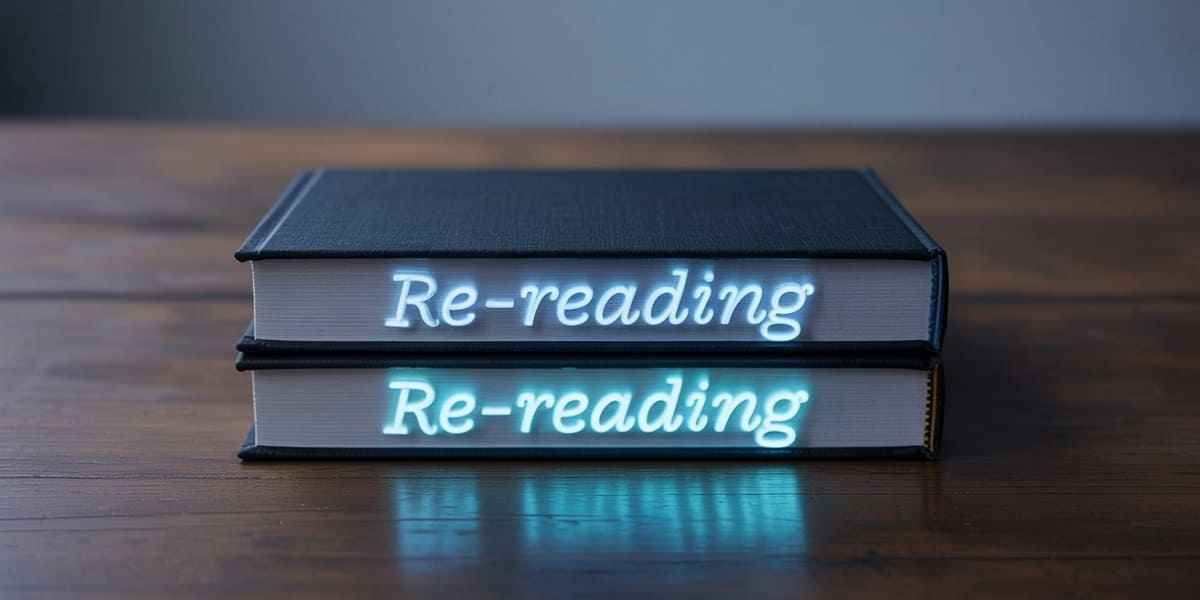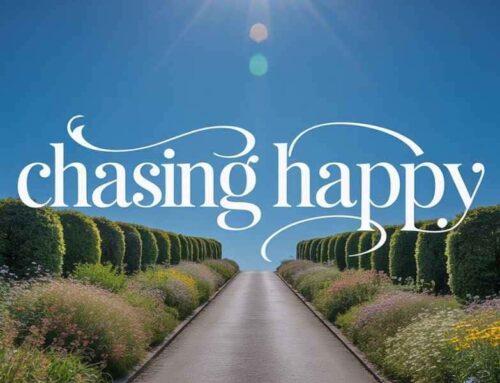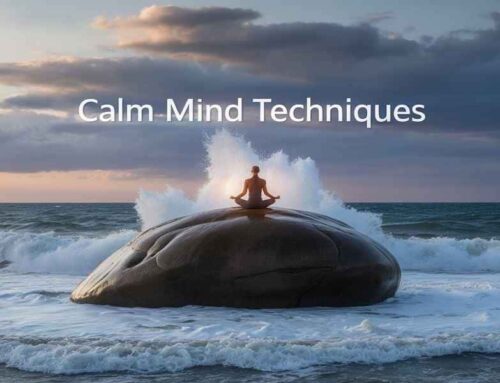
Why Re-reading a Book is Worth Your Time?
Re-reading feels familiar, doesn’t it? Like rediscovering a hidden room in your childhood home. You know the walls, the corners, the creaky floorboard near the window, but suddenly, there’s a door you never noticed before. Why do we return to the same stories, even when we remember every twist and turn? What pulls us back to books we’ve already read, sometimes dozens of times?
You might think the magic lies in the story itself. But what if it’s you who changes? Re-reading isn’t just about reliving a plot. It’s about meeting yourself anew. The book stays the same, but life doesn’t. Every re-read becomes a mirror, reflecting where you are now versus who you were then.
A novel that once felt like an adventure story suddenly reveals deeper truths about resilience. A romance you skimmed for escapism now whispers lessons about compromise.
Think about your own shelves. Which books do you revisit? Maybe it’s Harry Potter, its pages dog-eared from childhood. Or Pride and Prejudice, whose characters feel like old friends. Perhaps it’s that obscure memoir you found during a hard year, its margins scribbled with notes only you understand. These aren’t just stories, they’re time capsules. They hold who you were when you first read them and who you’re becoming now.
But let’s pause. Why does re-reading matter in a world obsessed with newness? Why spend hours on a book you’ve already finished when there are endless “Must-Read” lists online? Simple: because the best stories grow with you. They’re not static. They evolve in your mind, shifting as your experiences reshape what you need from them. A book that comforted you at 15 might challenge you at 30. One you dismissed as boring could unlock a revelation years later.
This isn’t just sentimental talk. Studies suggest re-reading strengthens emotional connections to characters and themes. It sharpens your ability to notice subtleties, a glance, a metaphor, a line of dialogue you glossed over before. It’s like listening to a favorite song on repeat: the first play hooks you, but the tenth reveals the layers beneath the melody.
Still, not all re-reading is equal. Sometimes you grab an old favorite for comfort, other times to dissect its craft. Maybe you’re preparing for a book club discussion or writing a review. Or perhaps you’re chasing nostalgia, hoping to recapture the thrill of discovering a world for the first time. Either way, the act itself is a conversation between past and present.
Consider this: when you re-read, you’re not just engaging with the author’s words. You’re revisiting your own history. That book you read after a heartbreak? It’s tied to late nights and tear-streaked pages. The fantasy epic you devoured during quarantine? It’s linked to isolation, maybe even survival. Re-reading becomes a way to honor those chapters of your life.
But here’s the catch: re-reading requires intention. It’s easy to skim through familiar passages on autopilot. To get the most out of it, you have to slow down. Ask questions. Highlight lines that strike you differently now. Write in the margins or better yet, keep a journal alongside the book. What’s changed? What surprises you? What feels irrelevant today?
You might even try re-reading a book you disliked years ago. Could it speak to you differently now? Many readers revisit classics they once found dull, Moby-Dick, Middlemarch and discover unexpected richness. Taste isn’t fixed. Neither is understanding.
And what about speed? Some swear by racing through a re-read to relive the plot. Others savor every sentence, treating it like a first-time experience. There’s no right way. Your approach depends on your goal. Are you seeking solace, analysis or something else entirely?
Let’s not forget the joy of noticing patterns. A character’s growth you once ignored now mirrors your own. A subplot you skimmed gains new relevance. Themes of identity, justice or love resonate differently because you’ve lived more since your last read. This isn’t just about the book, it’s about how life reshapes your lens.
Still, skeptics argue re-reading steals time from new voices and perspectives. Why reread The Great Gatsby when you could explore a debut author? Fair point. Balance is key. No one’s saying to abandon discovery. But re-reading isn’t a failure to move forward, it’s a choice to dig deeper. It’s recognizing that some stories deserve more than a single pass.
Think of it this way: we revisit favorite movies, podcasts, even TV shows. Why not books? A great story isn’t consumed and discarded. It’s lived with. It becomes part of your inner landscape.
So, what’s stopping you? Maybe the guilt of “Wasting” time on something you’ve already read. Or the fear that a beloved book won’t hold up. Both are valid. But consider the upside: re-reading isn’t about recapturing the past. It’s about finding new meaning in the present.
Take a chance. Pull that weathered paperback from your shelf. Flip past the coffee stains and underlined quotes. Read it like you never have before. You might just find it reads you back.
And if you’re still unsure, ask yourself this: what book has stayed with you long after you turned its final page? Why? What did it teach you then and what might it reveal now?
The answers lie in the pages waiting to be opened again.
The Nostalgia Factor: Why Old Stories Feel Like Home
There’s a reason re-reading feels comforting. Nostalgia isn’t just a buzzword, it’s a neurological hug. Familiar stories activate the same brain regions as music or scents tied to childhood memories. You don’t just read the words; you feel the environment they conjure. The smell of the paper. The light filtering through the window as you read. The emotions you carried back then.
Re-reading becomes a time machine. It lets you visit younger versions of yourself. Think of the teenager who clung to The Catcher in the Rye during high school. Now, decades later, the same book might feel naive or shockingly prescient. Either way, it reconnects you with who you were. That’s powerful.
But nostalgia alone isn’t enough. The best re-reads offer more than warm fuzzies. They challenge you. They ask, How have you changed since we last met?
J.K. Rowling’s Harry Potter series, for instance, is often revisited by adults who grew up with the books. What once seemed like a simple tale of magic and friendship now brims with themes of trauma, systemic injustice and found family. The story didn’t change. The readers did.
Anne Fadiman, author of Ex Libris, writes, “When I re-read a book, I’m not just rereading the text, I’m rereading myself.” Her words capture the essence of re-reading as an act of self-discovery. It’s not about the destination but the journey you take with the book, again and again.
So, next time you pick up an old favorite, lean into the nostalgia but don’t stop there. Ask what the story demands from you now. What lessons have you outgrown? What truths have you finally caught up to?
Seeing New Layers: How Re-reading Reveals Hidden Depths
Ever read a book and missed its core message until the third or fourth pass? You’re not alone. Our brains prioritize survival and novelty, which means first-time reading often skims the surface. We absorb plot and pacing, leaving deeper themes for later.
Take 1984 by George Orwell. A teenager might see it as a dystopian thriller. An adult reader recognizes its warnings about surveillance, misinformation and authoritarianism. The text remains unchanged, but context transforms its impact.
Or consider To Kill a Mockingbird. On the surface, it’s a coming-of-age story set in the segregated South. Re-read it after studying racial justice and its flaws and virtues become sharper. You notice nuances in Atticus Finch’s idealism or Scout’s limited perspective.
This phenomenon isn’t limited to classics. Even genre fiction deepens with re-reading. Romance novels, often dismissed as “Fluff,” gain emotional weight when revisited after personal heartbreak or growth. Thrillers reveal foreshadowing and red herrings you glossed over the first time.
C.S. Lewis once said, “We don’t re-read books, we re-read ourselves.” His quote hints at how stories act as mirrors. They don’t change, but we do. Every re-read exposes layers you weren’t ready for before.
But how do you actively uncover these layers? Try these strategies:
- Read Slowly: Skimming breeds complacency. Give yourself time to sit with each line.
- Annotate: Jot down reactions in the margins. Compare them to notes from past reads.
- Focus on a Character: Track their decisions, motivations and growth arcs.
- Ask Questions: Why does this scene linger in your mind? What does it say about human nature?
- Compare Adaptations: Films or audiobooks can highlight aspects you hadn’t considered.
Re-reading isn’t passive. It’s detective work. You’re hunting for clues, not just about the story, but about your evolving relationship with it.
Personal Growth Through Re-reading
Books are companions, but they’re also teachers. Re-reading isn’t just about pleasure; it’s a tool for self-improvement. Ever noticed how a self-help book speaks differently after a life setback? Or how a memoir feels more profound after you’ve faced similar struggles?
Take Brené Brown’s The Gifts of Imperfection. First-time readers might skim for quick confidence tips. Re-readers, especially those navigating vulnerability or shame, uncover actionable wisdom. The same applies to fiction. Reading Eat Pray Love after a divorce isn’t just nostalgic, it’s therapeutic.
Re-reading also hones critical thinking. You start spotting authorial bias, cultural blind spots or plot holes you previously ignored. Does a beloved protagonist truly deserve praise or are they flawed in ways you overlooked? Engaging with these questions builds analytical skills applicable beyond the page.
Moreover, re-reading fosters empathy. Returning to a character’s perspective after a personal crisis, like grief or job loss, deepens your understanding of their choices. You’ve lived more, so their struggles resonate differently.
Consider The Bell Jar by Sylvia Plath. A college student might read it as a bleak portrait of mental illness. Someone recovering from depression finds solidarity in Esther Greenwood’s voice. The book becomes a companion in healing.
But re-reading isn’t always comfortable. Sometimes it exposes outdated beliefs or problematic tropes. A book that once felt empowering might now seem regressive. That discomfort is growth. It pushes you to reflect on how your values have evolved.
In this way, re-reading isn’t just about literature, it’s about becoming a more self-aware person.
How Re-reading Differs From First-Time Reading
First impressions matter. When you read a book for the first time, anticipation shapes your experience. You’re chasing answers: Will the hero succeed? Will the couple reunite? Will the mystery be solved?
Re-reading removes suspense but adds intimacy. Knowing the ending frees you to focus on craft, the author’s word choice, pacing or symbolism. You start noticing how scenes build tension or how dialogue reveals character.
For example, reading Gone Girl the first time, you’re gripped by the twists. On the second pass, you dissect Amy’s diary entries, marveling at Gillian Flynn’s manipulation of perspective. The thrill shifts from “What happens next?” to “How did she make me feel that way?”
Similarly, poetry demands re-reading. A single stanza can unravel differently each time. Mary Oliver’s line, “Tell me, what is it you plan to do with your one wild and precious life?” feels urgent at 20, defiant at 40 and bittersweet at 60.
First-time reading is exploration. Re-reading is excavation. Both are valuable, but the latter asks you to dig deeper, to question assumptions and to appreciate artistry over plot.
Tips for Effective Re-reading
Ready to revisit an old favorite? Here’s how to make the most of it:
- Choose Purposefully: Are you seeking comfort, analysis or closure? Your goal shapes how you read.
- Wait a Few Years: Time creates distance, letting you see the book with fresh eyes.
- Change the Format: Switch from print to audiobook or vice versa. A new medium alters your focus.
- Discuss It: Join a book club or online forum. Hearing others’ perspectives enriches your own.
- Pair It With Something New: Contrast a re-read with a fresh title on a similar theme.
Avoid rushing. Let the story breathe. You’re not just reading, you’re reflecting.
Famous Advocates of Re-reading
Writers often champion re-reading. Vladimir Nabokov said, “One cannot read a book: one can only reread it.” He believed the first pass was too focused on plot to grasp artistry.
Stephen King rereads The Godfather yearly, noting new details each time. For him, it’s a masterclass in storytelling.
Even scientists endorse the practice. Cognitive psychologist Maryanne Wolf argues re-reading improves empathy and critical thinking. It forces the brain to engage differently, building neural pathways linked to deeper comprehension.
If legends like Nabokov and King return to the same books, maybe we should too.
Conclusion: Your Turn to Re-read
Re-reading isn’t indulgence, it’s investment. It’s choosing depth over breadth, connection over consumption. So, what book deserves your attention?
Grab it tonight. Notice how it feels different. Notice how you feel different.
And when you’re done, share your experience. Tag a friend who loves the book. Post a review online. Or simply smile, knowing you’ve grown alongside a story you’ll never quite finish.
Because re-reading isn’t about the end. It’s about the endless ways a book can shape and reshape you.
Now, go turn the page again.
Call to Action
Share your favorite re-read below! What book have you returned to most often and what did you discover this time? Let’s build a list of timeless stories worth revisiting.
FAQs
Q1: Why should I re-read a book instead of exploring new ones?
A1: Re-reading isn’t about avoiding new stories, it’s about deepening your connection to ones that already resonate. Familiar books grow with you, offering fresh insights as your life experiences evolve. A novel that once felt like an adventure might reveal hidden truths about resilience or identity years later.
Q2: How is re-reading different from reading a book for the first time?
A2: First-time reading focuses on plot and suspense, while re-reading lets you savor craft, themes and subtleties. Knowing the ending frees you to notice details, like symbolism, character motivations or foreshadowing, you might have missed initially.
Q3: What are the biggest benefits of re-reading?
A3: Re-reading strengthens emotional bonds with stories, sharpens critical thinking and acts as a mirror for personal growth. It also provides comfort through nostalgia while challenging you to see new layers in familiar narratives.
Q4: Which books are worth revisiting?
A4: Any book that left a lasting impression. Classics like Pride and Prejudice or 1984, beloved childhood stories like Harry Potter or even self-help titles like Brené Brown’s work often reward re-reading. Choose books tied to meaningful life moments or unresolved questions.
Q5: How often should I re-read a favorite book?
A5: There’s no rule, wait until you feel a shift in your perspective or life circumstances. Many readers revisit favorites every few years to notice how their interpretations change.
Q6: Can re-reading help with personal growth?
A6: Absolutely. Stories often reflect your evolving values and challenges. A memoir that once felt inspiring might now offer practical advice for a current struggle. Re-reading becomes a conversation between the text and your present self.
Q7: How can I get more out of re-reading?
A7: Slow down, annotate margins or keep a journal to track new observations. Discuss the book with others, try an audiobook version or focus on a specific character or theme during each pass.
Q8: Does re-reading lose its magic over time?
A8: Not necessarily. While the surprise of plot twists fades, re-reading trades suspense for intimacy. You’ll uncover hidden nuances, deepen your appreciation for the author’s craft and reconnect with the story’s emotional core.
Q9: How does re-reading affect the brain?
A9: Studies show it strengthens neural pathways linked to empathy and memory. It also enhances pattern recognition, as your brain picks up on recurring motifs, dialogue or character development you glossed over before.
Q10: What if I dislike a book I once loved?
A10: That’s okay! Changing opinions are a sign of growth. A book that once felt profound might now seem outdated or flawed. Use this as an opportunity to reflect on how your tastes, values or understanding have evolved.














